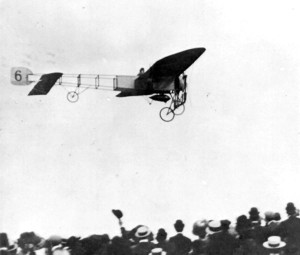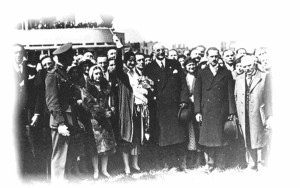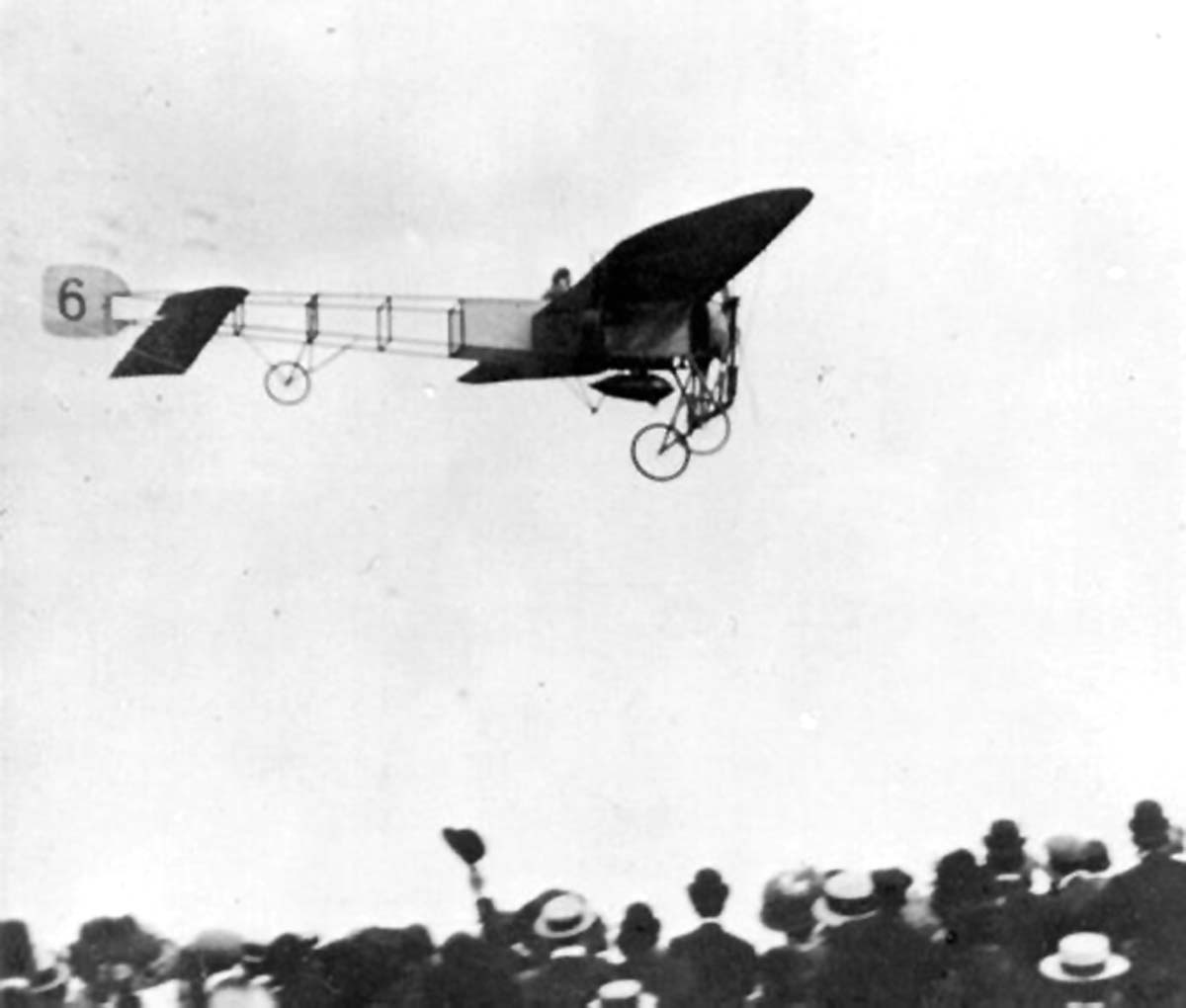By Robert P. Olislagers

Belgium aviation pioneer Jan Olieslagers in action during the flying meet at Utrecht on August 24, 1910. His flights were recorded on film.
He was called “Le Demon Anversois” or “De Duivel van Antwerpen”–depending on whether you were on the French or Flemish side of the linguistic divide in Belgium around the turn of the 20th century.
Born in Antwerpen on May 4, 1883, Jan Olieslagers was a jovial man with a quick smile and glistening eyes that belied his devil-may-care attitude towards anything resembling speed.
Back in the early 1900s, speed was confined to automobiles and motorcycles; Olieslagers took a particular liking to the latter, setting numerous speed records and becoming the first person to ride faster than 100 kilometers per hour–about 60 mph. He became world champion in 1902, the same year in which two young bicycle makers across “the pond” returned home from Kill Devil Hills near Kitty Hawk, North Carolina, after successfully flight-testing their glider.
The following year, those two young men, Orville and Wilbur Wright, returned to Kitty Hawk to fly the first heavier-than-air machine.
The impact of that first flight was felt more profoundly in Europe than in the United States. Indeed, by 1908, Henry Farman, the Voisin brothers, Louis Bleriot and others had surpassed the Wrights in aerial experimentation and flying was becoming of age. Many of the experimenters were French putting on flying demonstrations, most notably in France, but also in Belgium. In fact, many of the French aircraft used Belgium-made engines. In the meantime, all this activity had not escaped the Belgium-born Olieslagers!
He quickly turned his attention towards this new fad sweeping across Europe and bought his first airplane in 1909. By 1913, he had broken no fewer than seven world records. But World War I (1914-1918) brought an abrupt end to the air races and flying demonstrations. Jan Olieslagers and his two brothers joined the war effort, even donating their three Bleriot XI monoplanes to the cause.
Adding to his already considerable daredevil reputation, Olieslagers again distinguished himself. In his first combat mission, he engaged the enemy carrying only a pistol! By war’s end, he had flown 491 sorties and engaged in 91 dogfights. An ace, Olieslagers was credited with six aerial victories but this number would no doubt have been higher if he had only bothered to claim his kills. He seldom did, however, possibly owing to the fact that enemy pilots in those days accorded each other a great deal of deference–sometimes even making sure the other pilot landed safely after being shot down.

Princess Astrid (with flowers) and Jan Olieslagers (2nd from the right, holding hat) at the 1923 dedication of Antwerpen Airport.
Following the war, Olieslagers returned to his hometown of Antwerpen. In an act reminiscent of Charles Lindbergh’s tour around the U.S. to promote the development of airports following his transatlantic solo flight, Olieslagers was instrumental in developing the airport at Antwerpen. Convincing a number of wealthy industrialists of the importance of aviation, he arranged the purchase of 80 hectares near Deurne for the development of a new airport. With Olieslagers on hand, Princess Astrid of Belgium dedicated the airport in 1923, with King Albert I serving as the airport’s patron saint.
Jan Olieslagers died on March 23, 1942, at the age of 58, in the city he claimed as his own. Having attained legendary status as a daredevil and a war hero, for his valor he was awarded the Croix de Guerre by both Belgium and France, the Order of Leopold II, the Russian Order of Saint Stanislas, and, France’s prestigious Legion d’Honneur. Immortalized in a song that every Dutch-speaking child sang in the 1920s and 1930s, he is now mostly remembered only by those from that generation–and a few historians.
Although the names are close, Robert P. Olislagers, airport director at Centennial Airport, says he can lay no claim as a relative of Jan Olieslagers.












